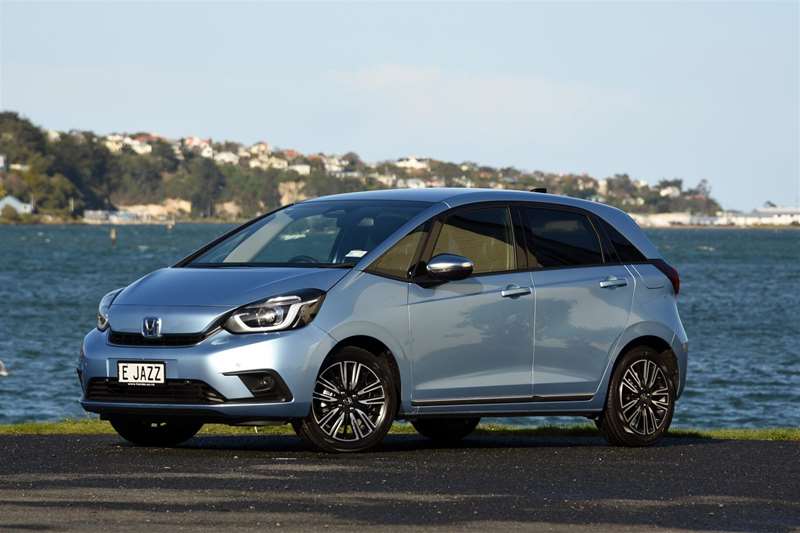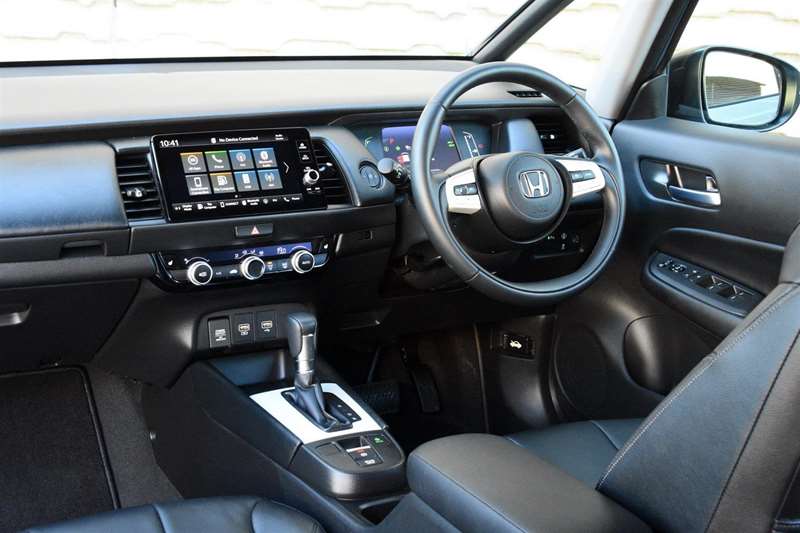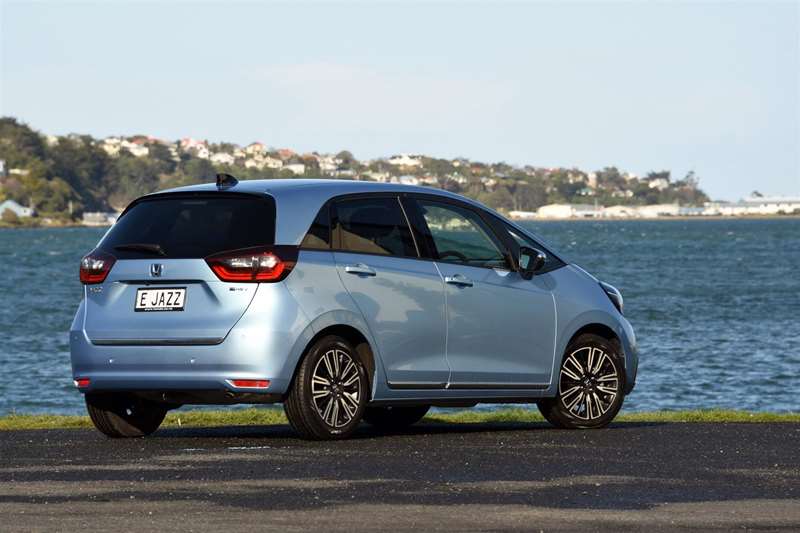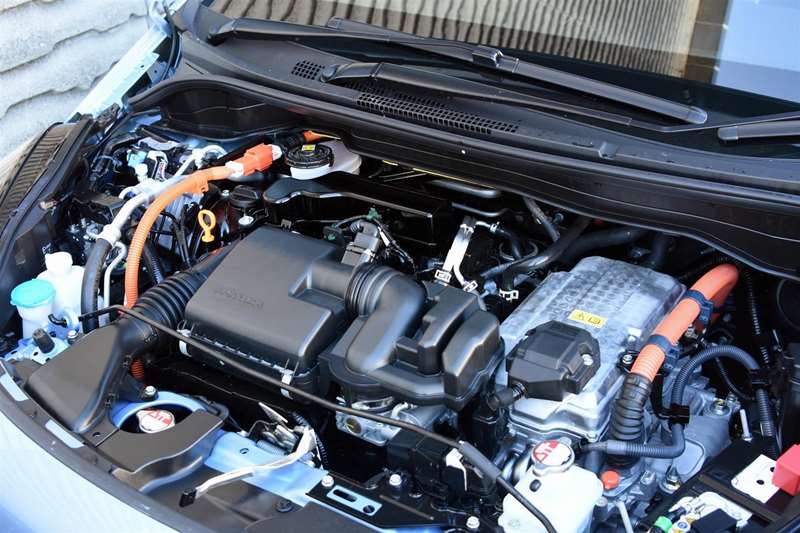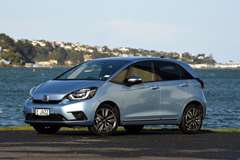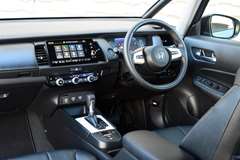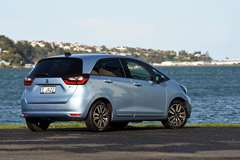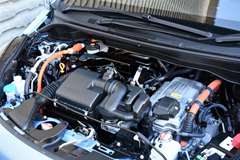It’s not a plug-in, but the hybrid version of the latest Honda Jazz is still a clever piece of kit, as David Thomson discovers.
What’s new?
For well over a decade now the Honda Jazz has been every New Zealand grandparent’s favourite car. Well, perhaps not every grandparent, but certainly a fair number, including senior members on both sides of my family.
Launched here in May, the latest fourth-generation Jazz sits on an all-new platform, with a completely fresh exterior and interior design and a mix of old and new drivetrains. It takes a three-pronged approach to maintaining appeal to existing customers and branching out in search of new fans.
Priced from $28,000, the Life variant is the new take on the Jazz as we have long known it; a conventional compact front-drive hatch, petrol-powered, most notable for the cleverness and flexibility of its interior design.
Opening at $30,000, the Jazz Crosstar, is Honda’s equivalent to the ‘‘Cross’’ variant of Toyota’s rival Yaris range; a mechanically identical but higher-riding version of the standard Jazz, complete with suspension and steering tweaks and rugged crossover-style exterior styling enhancements.
Finally, there’s the $35,000 Jazz e:HEV Luxe, which is the subject of this appraisal. Through bringing hybrid power to the New Zealand Jazz line-up for the first time, it rates as the most interesting of the new range.
The hybrid Jazz features a self-contained rather than plug-in hybrid set-up. It comprises two electric motors, a small lithium-ion battery, a 1.5-litre petrol engine, and a single power control unit that propels the wheels via an innovative fixed-gear transmission.
The particular trick with this set-up is that the electric motors provide the primary propulsion rather than acting as an auxiliary support to the petrol engine. Operating in EV drive mode, the vehicle is fully electric, with the battery powering the vehicle. In hybrid drive, the petrol engine powers the electric generator motor, which in turn supplies it to the electric propulsion motor. Only in engine drive does the petrol engine directly power the car.
The hybrid musters 80kW of power compared with 89kW for the pure petrol, but the 235Nm of its electric set-up alone is far superior to the pure petrol’s 145Nm. Its standard cycle economy return is — by some measures at least — crushingly superior to the pure petrol variant’s rating.
What comes as standard?
The hybrid tops the new Jazz range equipment-wise.
Comfort and convenience features include keyless entry, an electronic park brake, push button start, semi-leather upholstery, heated front seats, and climate control air-conditioning. A wide-view reversing camera is fitted along with parking sensors.
The e:HEV also has a comprehensive version of the Honda sensing safety suite — adaptive radar cruise control, collision mitigation braking, forward collision warning, lane keeping assist and lane departure warning, road departure mitigation and auto-dipping headlights.
What’s it like to look at?
After adopting a relatively bold look for the third generation Jazz, Honda has dialled things back visually this time.
Gen four Jazz is a cohesive and neatly styled effort mind, and the narrow-grilled nose and smiley-face look is a point of difference in a new car world dominated by wide, gaping grilles. The sickle-like LED running lights nestled within the main headlight and tail-light clusters are neat detailing, but the most important change is the adoption of a far thinner A-pillar. This gives the new Jazz a lighter, more delicate look above the waistline than its predecessor and — more importantly — massively improves visibility from the front seats.
Running on economy-optimised 185/55 R16 tyres, the e:HEV Jazz signals its hybrid status via blue bordered Honda badges front and rear, and a small e:HEV badge on the tailgate.
What’s it like inside?
A Tardis-like cabin has been a defining feature of Jazz for years and remains so with this latest version.
Those trademark fold-down rear ‘‘magic’’ seats are retained, and there are plentiful storage options within a cabin that feels like it belongs to a car at least one class up from the Jazz size-wise.
With the hybrid’s battery located under the boot floor, a spare wheel is dispensed with in favour of an emergency kit, and cargo capacity is a little diminished. However this latest Jazz is still a carrying-capacity class leader, swallowing up to 304-litres when the rear seats are raised, and 1199-litres when they are folded down.
Helped by the new A-pillar and associated wide windscreen, the front of the cabin was light and airy, despite a preponderance of dark trims above as well as below the window line. Fit and finish were up to Honda’s usual high standards.
The dash is completely new. Clean-lined and clutter-free, it moves with the times in adopting a more contemporary widescreen infotainment touchscreen interface alongside a fully digital instrument cluster. The infotainment system includes seamless smartphone mirroring (wireless for Apple devices, via plug-in for Android), which is something of a necessity as Honda’s set-up relies on smartphone-based rather than on-board satellite navigation. USB and 12v plug points are provided in conjunction with a small tray, located forward of the gear-lever at the base of the centre console.
Improvements to the seating position up front extend to more than improved visibility, for the seats themselves have been completely re-designed, with thicker squabs and better support.
The fact that the Jazz also has a decent-sized lidded storage bin between the front seats exemplifies the remarkable packaging that gives a big-car feel within a small-car skin.
What’s it like to drive?
Ease of use is the quality that came consistently to mind when using the car. The e:HEV Jazz is a supremely easy car to get into and drive without too much thought. Its steering is light but accurate, it rides nicely, and it is dynamically well-mannered without being exceptional in any particular way.
Refinement is very good, especially when gliding along in EV mode, or at gentle throttle openings in general motoring. The petrol engine can become a little raucous when required to work hard on hills, or during rapid acceleration.
Performance is pleasingly brisk and responsive, not least due to the ability of the electric motors to deliver maximum torque instantly.
The three-mode drive system is smartly configured to operate seamlessly without the need for any driver intervention. At speeds of up to 40kmh, the vehicle will operate mainly in pure EV mode so long as there is sufficient battery charge and nothing beyond modest acceleration is demanded. Beyond that, up to around 80kmh, it switches between EV and Hybrid modes, and beyond that again, it largely operates between hybrid and engine modes. Regenerative braking tops up the battery.
What about economy?
A main reason for choosing the e:HEV Jazz over a conventionally-powered variant is improved fuel economy and its attendant environmental benefits.
Read the official fuel consumption blurb and compare the e:HEV’s quoted standard cycle economy return of 2.8/100km with the pure petrol’s 5.8l/100km, and the verdict will seem like a complete no-brainer in favour of the hybrid.
The reality is rather more complex than that. The quoted 2.8l/100km figures comes from a Japan-specific test that is not comparable to WLTP test regime that is the norm for assessing economy here (including for the Government’s Clean Car Discount rebate scheme). Under the WLTP regime the e:HEV Jazz manages a 4.4l/100km standard cycle return. That’s still a worthy result and aligns more closely to the results achieved on the Drivesouth test. These test drives derived a return of 4.5l/100km during extended urban driving on flat and reasonably lightly trafficked roads, and an overall return of 5.4l/100km for the wider test that included town hill-work and some limited open road driving.
Verdict
This latest Jazz carries on a fine small car tradition for Honda. Real world economy won’t be as good as the headline figures might lead you to believe, but the e:HEV Jazz is a frugal machine nonetheless.
